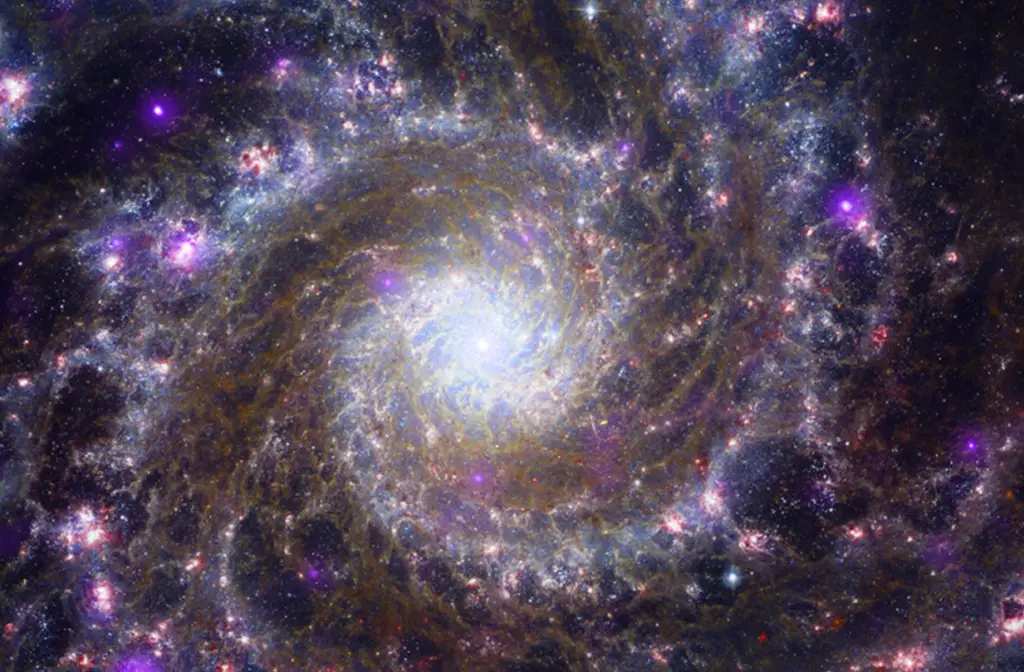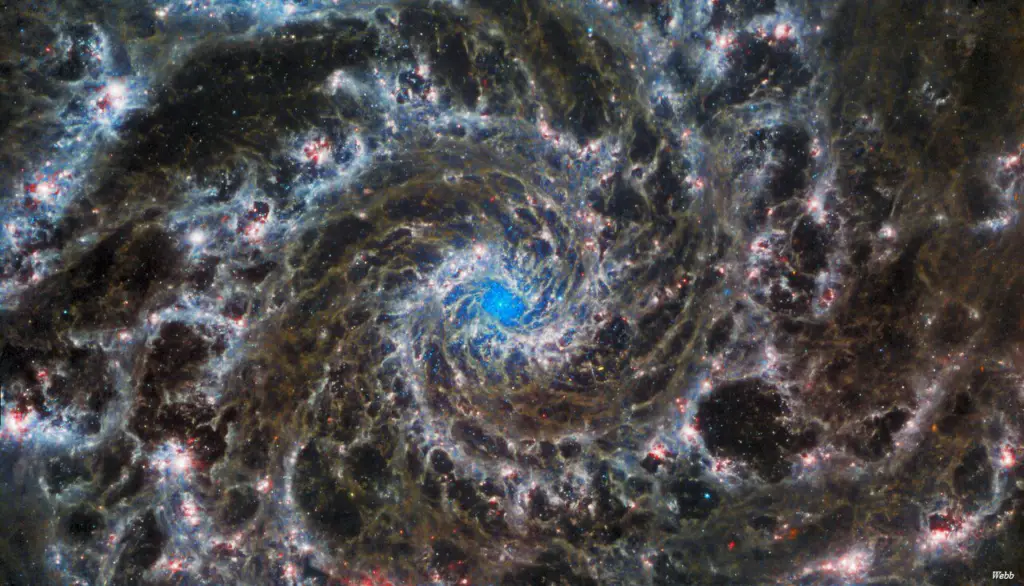Now we have a broader (and even more beautiful!) understanding of the galaxy M74! Awesome view of Spiral galaxy Messier 74 from Hubble and NASA’s James Webb Space Telescope show the power of observing in different wavelengths. Hubble’s optical view highlights older, redder stars near the center along with younger, bluer stars in the spiral arms.
Webb’s infrared vision instead shows the dense cluster of stars near the galaxy’s core, and the gas and dust within its arms. The combined view brings it all together into a spectacular view of one object seen in multiple wavelengths!
Hubble image credit: ESA/Hubble & NASA, R. Chandar
Webb image credit: ESA/Webb, NASA & CSA, J. Lee and the PHANGS-JWST Team; Acknowledgement: J. Schmidt
Composite image credit: ESA/Webb, NASA & CSA, J. Lee and the PHANGS-JWST Team; ESA/Hubble & NASA, R. Chandar; Acknowledgement: J. Schmidt

Telescope teamwork never looked so good. Awesome view of Spiral galaxy Messier 74
This image of the spiral galaxy M74 features visible-light data from Hubble, along with X-ray information from Chandra X-ray Observatory and infrared data from NASA’s James Webb Space Telescope. M74 is about 32 million light-years away from us, and is nicknamed the “Phantom Galaxy” because its relative dimness makes it difficult to spot with smaller telescopes.
Image credit: X-ray: NASA/CXC/SAO; Optical: NASA/ESA/STScI; IR NASA/ESA/CSA/STScI, J. Lee and the PHANGS-JWST Team; Image Processing: N. Wolk and K. Arcand

Feast your eyes on the beautiful spiral structure of the Phantom Galaxy, M74, as seen by Webb in mid-infrared light. Delicate, web-like filaments of dust and gas wind outwards from the center of the galaxy. These spiral arms are traced by blue and bursts of pink, which are star-forming regions. A cluster of young stars glow blue at the very heart of the galaxy.
This Webb image of M74 was processed by ESA, with an acknowledgement to citizen scientist Judy Schmidt for bringing this object to the public’s attention with her own, earlier, processed image.
Advertisements
Image credits: ESA/Webb, NASA & CSA, J. Lee and the PHANGS-JWST Team. Acknowledgement: J. Schmid

Galaxy M74, imaged by James Webb, is the latest glorious image from the new space telescope.
Revealed here in infrared are the cooler stars and cosmic dust in the so called “grand spiral” disc of the galaxy as its starry arms wrap themselves around the older, brighter core. Interestingly, great tendril like structures of old stars can be seen bridging the space between the spiral arms themselves, which in this infrared image almost appear to give the galaxy depth, almost as if it were not truly a galaxy but actually the vast awning to some deep, swirling cosmic portal.
Situated 32 million light years away from Earth in the constellation of Pisces, we suspect this image from the JWST might just beat hubble for quality this time
Advertisements



